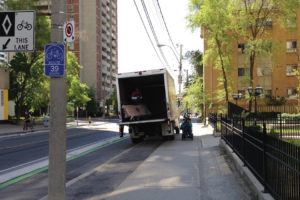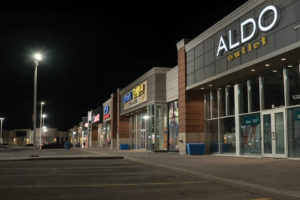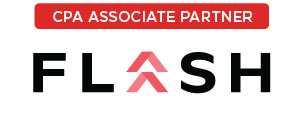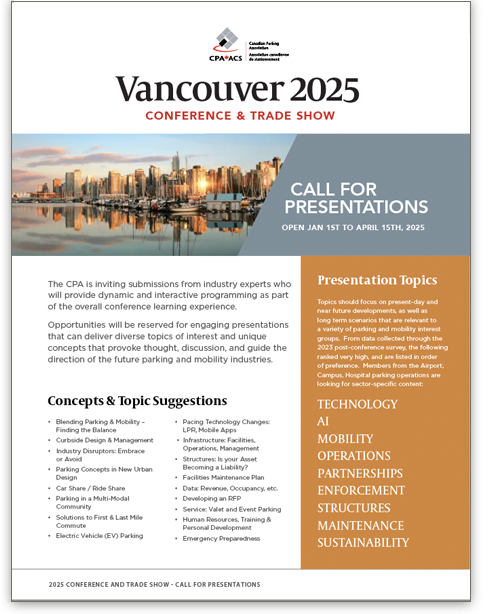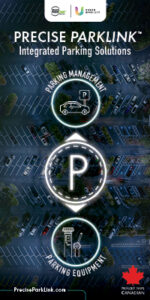The City of Lethbridge has approx. 700 older style single parking meters (as well as a plethora of parts) that we are looking to put up for sale to another community if it has an interest in any of them.
Does anyone know of a municipality looking to add single space meters to their streets or inventory or possibly upgrade some old equipment?
Anything would be helpful, thank you
-Phillip Berg
The City of Red Deer has a School for Disabled Children downtown in our paid parking area. The School and parents of course feel that we
should offer free on street parking for their busses and parents dropping off and attending meetings in the school. We have taken out 4 parking
stalls and have made this a handicapped zone to accommodate their busses. The question I have is in three parts:
- Does your Municipality have a school in the paid parking areas;
- How do you accommodate parents parking in metered spaces; or
- Do you just open up parking in the area of the school.
-Fred Dieno
For immediate release
November 28, 2018 CARLETON PLACE, ON – OperationsCommander is excited to announce a new partnership agreement with HotSpot Parking Inc.
HotSpot’s innovative app allows customers to easily pay for temporary parking permits in municipalities, private enterprises, colleges and universities by using handheld devices.
“The temporary parking app market has exploded over the last few years. HotSpot is the perfect solution to provide our clients with a flexible tool to add this popular functionality to the OperationsCommander platform,” said Phil MacCallum, Director of Sales and Business Development at OperationsCommander. “The partnership will be an easy add-on to the existing platform, offering a customer service benefit to all current clients and any future installs.”
HotSpot’s app will be fully integrated with the OPS-COM platform so that permits purchased can be immediately pushed to a client database for real-time enforcement accuracy. As a fully integrated parking app, customers can choose to add this temporary parking functionality at no extra cost.
Instead of charging the end users a service fee for every single transaction, HotSpot offers a monthly or annual membership approach of just two dollars per month or twenty dollars annually. A ten percent discount is available for CAA members.
One of HotSpot’s most popular features is its refund option. It saves users money by allowing them to bank unused parking time for future use. HotSpot CEO Phillip Curley says the company is excited about partnering with OperationsCommander.
“OperationsCommander is a leader in online and parking security. HotSpot is a leader in providing users with a modern, mobile-based parking solution. This is a natural partnership,” said Curley. “We look forward to offering our superior services together to help users park safely, efficiently and affordably.”
HotSpot is based in Fredericton, New Brunswick. The company is best known for their pay-by-phone parking and transit solution. The HotSpot App supports…
By Peter Richards, IBI Group
Introduction
IBI Group worked with the City of Toronto on the Curbside Management Strategy. The City of Toronto has seen and continues to experience significant growth with substantial development adjacent to its right-of-way, resulting in considerable demands on the road network and excessive congestion; especially in the downtown core. Currently, curbside access (use of the shared space on a roadway adjacent to the sidewalk) is in high demand for motorists, cyclists, operators of transit, taxi, motor coach, courier and other deliveries/goods movement vehicles, and many other users.
The Curbside Management Strategy’s objective is to improve upon the efficiency and effectiveness of curbside space allocation and usage for all parking and loading activity, and to reduce congestion in the study area. The study area is bounded by Lake Shore Boulevard / Harbour Street, Bathurst Street, Queen Street, and Jarvis Street in Toronto. Between University Avenue and Yonge Street, the Study Area extends northerly to Dundas Street.
Activities under the Curbside Management Strategy (CMS) will help manage traffic congestion by:
- Using innovative solutions to improve the balance of safe access for people and goods with mobility;
- Reducing illegal parking which may affect traffic flow; and
- Increasing legal parking availability and reducing parking “search time” (i.e., cruising).
The CMS study involved the following overall tasks – reviewing of existing conditions, assessing future condition impacts, outreach and stakeholder engagement, reviewing best practices, developing strategies to evaluate, and recommending a set of policies and a proposed implementation plan.
Existing Conditions Review
The objective of the Existing Conditions review was to study the existing transportation conditions and curbside usage, issues, and opportunities in downtown Toronto within the proposed study area. This included a high-level review of existing City of Toronto policies and commitments, to ensure adherence and consistency for any potential recommendations. Some significant issues…
By Daniele Desjardins
In conjunction with the Canadian Parking Association’s Annual Conference and Trade Show, Parking, the Urban Mobility Perspective, Canada’s 1st Unified Mobility Leadership Summit will be held in Toronto from September 16 to 19, 2018.
The event comes as a result of the long-standing relationship between the Canadian Parking Association (CPA) and the Association for Commuter Transportation of Canada (ACT Canada), the only organization dedicated to sustainable mobility in Canada.
Moreover, the event epitomises the new mission statement adopted unanimously by the CPA Board of Directors at its strategy session held at the start of 2018: Connecting Parking and Mobility Professionals in Canada.
Both organizations’ annual meetings will be held simultaneously under one roof, where delegates are encouraged to take in the shared programming, to underscore the intertwined futures of parking and mobility, and help amplify the CPA’s conference theme.
In 2016, CPA and ACT Canada held concurrent events in Ottawa and shared some sessions and events that were of mutual interest. This year, the partnership between the two organizations has been purposefully strengthened and aligned so that programing is accessible to all delegates. The intent is to position parking as a key component of an overall unified mobility strategy and focus.
The CPA and ACT Canada relationship dates back to 2005, with CPA’s participation on ACT Canada’s National Advisory Team to help identify cross-sector issues that impacted integrated mobility across the country. Back then, a reciprocal agreement was established to formalize the relationship and set up goals to work together collaboratively and develop meaningful synergies, networks and information sharing.
“Since then, the commonalities between the two organizations have evolved not only inwardly, but as a collective undertaking across all transportation and mobility-related sectors. CPA hopes to lead the association market in adapting to new…



